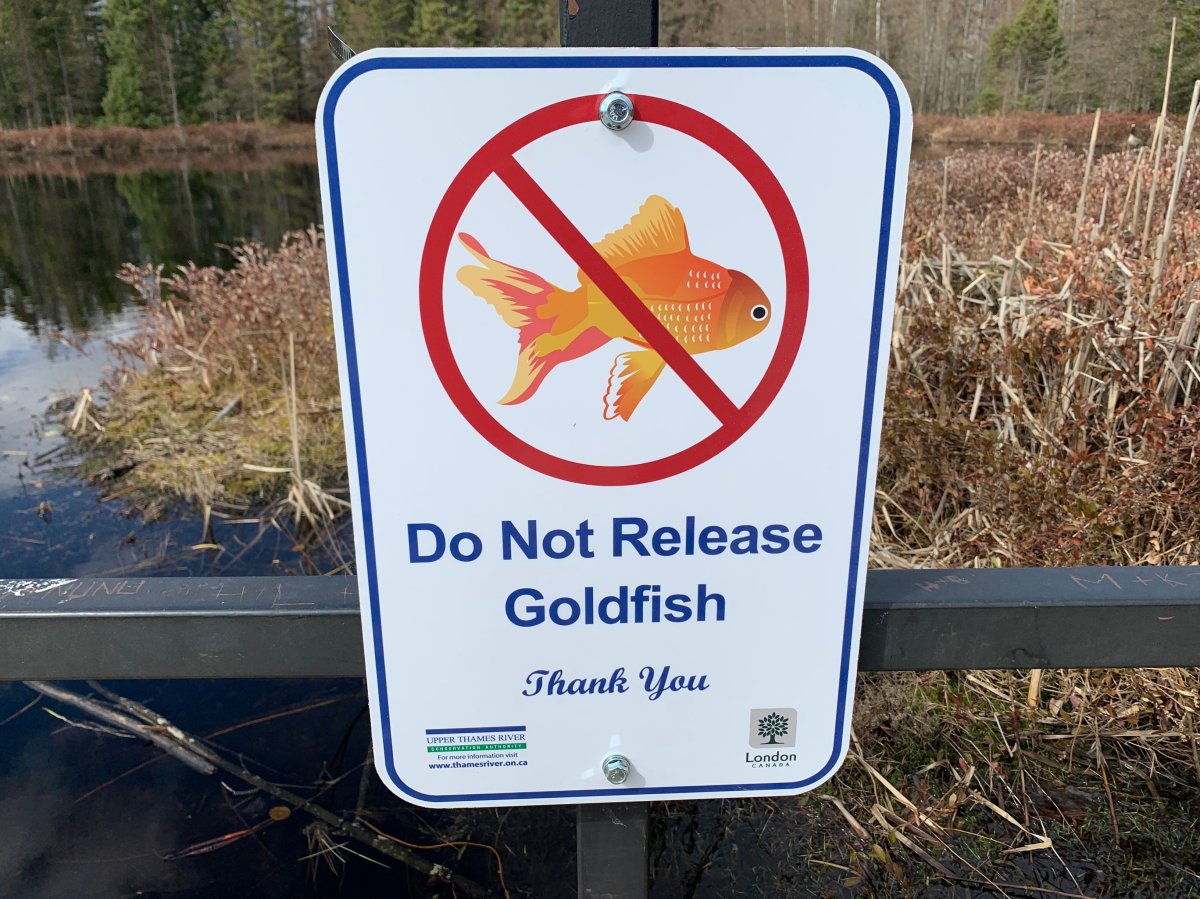The Upper Thames River Conservation Authority is urging the public to refrain from releasing goldfish into the wild.

It’s an ongoing problem but the authority is hoping that education and awareness can keep it from growing further.
“There’s a lot of the natural ponds in the city that have goldfish in them. I know we have some of the areas that we manage in the environmentally significant areas (ESA). There’s definitely goldfish in those ponds,” UTRCA land management technician Brandon Williamson tells Global News.
“People are surprised that goldfish are an issue. And, you know, you have this, you know, little one- or two-inch goldfish that’s been sitting in your aquarium for a couple of months. You figure, ‘Well, how how much harm did that do?'”
It turns out they can do a lot of harm, reducing native fish populations by eating fish eggs, juvenile fish, insects, and vegetation and — if the goldfish population grows too high — disturbing sediment and clouding the waters, which prevents vegetation from growing and covers up fish spawning beds.
“As long as the goldfish population isn’t too high, then a lot of times the native fish population can control them or at least, you know, keep the population down. But it’s in those poor quality ecosystems, poor water quality where where the trouble lies.”
As well, when space and food allow for it, goldfish can grow quite large.
“All the literature talks about up to 40 cm but we’ve seen them bigger than that in certain places. I would say the average is probably that 12-to-20 cm range.”
Williamson says removing the invasive fish is quite labour intensive, requiring physical netting and removing them by hand, or the electrofishing method which is expensive, requires a lot of permits, and is still “fairly laborious.”
The UTRCA has introduced signage to educate people about the issue.
More information on preventing aquatic invasive species can be found on the Fisheries and Oceans Canada website.








Comments